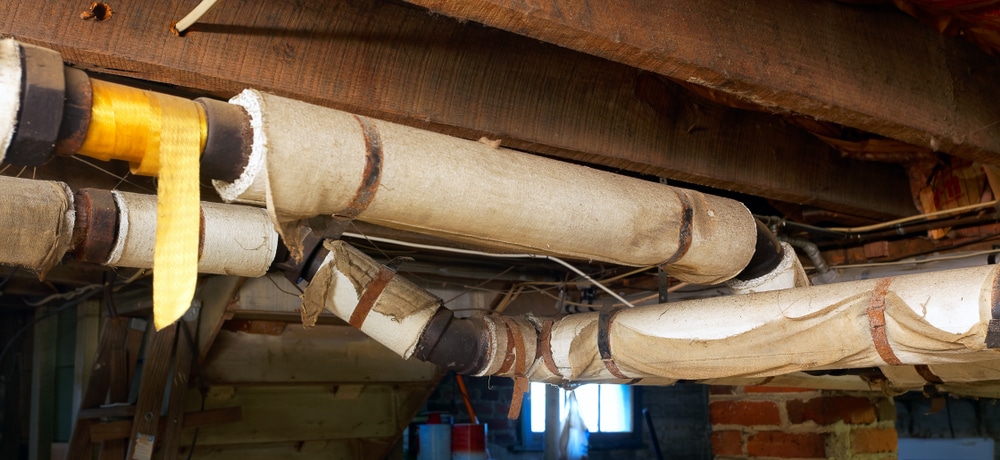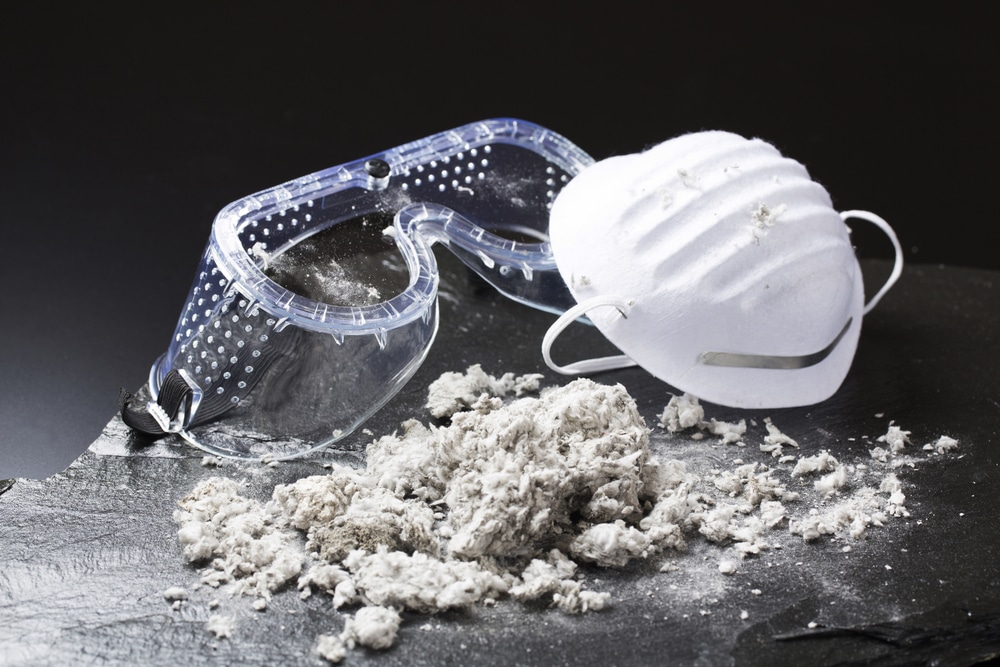Asbestos, a naturally occurring mineral, has been used for centuries due to its unique properties such as heat resistance, strength, and insulation. Its use was particularly popular during the 20th century when it was used in various products such as building materials, vehicle parts, and household items.
Unfortunately, its widespread use of has led to a major environmental crisis, which has affected not only humans but also the natural world.
Exposure to the fibers of this naturally occurring mineral is a serious health hazard that can cause serious health problems, including lung cancer, mesothelioma, and other respiratory diseases.
The mineral fiber released into the air during asbestos processing, use and removal can lead to long-term health problems, sometimes taking decades to manifest.
Despite the known dangers, it is still present in many homes, buildings, and products today.
This blog post, “The Deadly Truth About Asbestos: A Detailed Analysis,” will examine the history and impact and the health risks associated with exposure, and how to manage and identify asbestos in buildings.
It will also explore the current state of regulations surrounding its use and how we can protect ourselves and our communities from its deadly effects.
Whether you’re a homeowner, contractor, or concerned citizen, understanding the risks and management of asbestos is crucial. By shedding light on the dangers and providing practical tips for safe handling and disposal, we can take steps to protect ourselves and future generations from the devastating effects of this hazardous material.
What are the 6 Different Types of Asbestos
There are six different types of asbestos, which are classified into two mineral groups: Serpentine and Amphibole.
Chrysotile Asbestos: This is a member of the Serpentine mineral group and is commonly known as white asbestos. It is the most common type of asbestos and is frequently found in building materials such as roofs, ceilings, and walls.
Amosite Asbestos: This is a member of the Amphibole mineral group and is commonly known as brown asbestos. It was used in the construction industry for asbestos insulation materials and fireproofing.
Crocidolite Asbestos: This is a member of the Amphibole mineral group and is commonly known as blue asbestos. It was used in the construction industry for insulation materials and fireproofing.
Tremolite Asbestos: This is a member of the Amphibole mineral group and can be found in a variety of construction materials such as insulation, paint, and roofing.
Actinolite Asbestos: This is a member of the Amphibole mineral group and can be found in a variety of construction materials such as insulation, paint, and roofing.
Anthophyllite Asbestos: This is a member of the Amphibole mineral group and can be found in a variety of construction materials such as insulation, paint, and roofing.
All types of the asbestos compounds are hazardous to human health when inhaled or ingested. It’s important to take proper precautions when working with materials that may contain asbestos or asbestos dust, and to seek professional help if you suspect that you have been exposed to asbestos.
Where does Asbestos come from?
Asbestos is a naturally occurring mineral that is mined from the earth. It is composed of long, thin fibers that are resistant to heat, fire, and chemicals. Asbestos ore is found all over the world, with the largest deposits being located in Canada, Russia, China, and South Africa.
Its mining dates back thousands of years, with the ancient Greeks and Romans using asbestos fibers in their clothing, tablecloths, and napkins because of their heat-resistant properties.
However, it wasn’t until the Industrial Revolution in the 19th century that asbestos began to be widely used in industrial applications, such as insulation, roofing materials, vinyl sheet flooring and brake pads.
Today, its use is heavily regulated in many countries due to the serious health risks associated with exposure to the fibers. However, it can still be found in some older buildings and materials, particularly in construction materials that were manufactured before the 1980s.
Proper precautions must be taken to safely remove and dispose of this material to prevent health risks to workers and the public.
Asbestos Mining in the United States: Past and Present
The asbestos mining industry in the United States has a rich and complex history that spans over a century. The industry began in the early 1870s, with the opening of the first documented asbestos mine in Vermont.
By the early 1900s, asbestos mining had become a thriving industry in several states, including Georgia, Montana, and California.
During this time, asbestos was in high demand as it was used in a vast array of industrial applications. From insulation to brake pads, to fireproofing materials, asbestos was considered the miracle mineral.
It was mined, processed, and shipped in large quantities across the country and around the world.
The mining practices during this time were not heavily regulated, and the safety precautions for workers were minimal. Miners were often exposed to large quantities of hazardous particles and dust without any protective gear.
This lack of safety measures led to high rates of lung disease among workers in the industry.
Despite the known health risks, the asbestos industry continued to grow throughout much of the 20th century. By the 1970s, the industry had reached its peak, and the United States was the world’s largest producer and consumer of asbestos.
Today, there are no active mines in the United States, and the use of asbestos in new products is heavily regulated. However, the legacy of asbestos mining and use still lingers, as many buildings and products manufactured before the 1980s contain some form of this hazardous material.
The risks associated with exposure are significant, as the fibers can cause a range of lung diseases, including mesothelioma, asbestosis, and cancer. As a result, asbestos removal and disposal is a highly specialized and regulated industry.
The asbestos mining industry in the United States was a significant contributor to the country’s economy for over a century. However, the industry’s practices were not regulated, and the health risks for workers were not fully understood until the 1960s and 1970s.
Today, the legacy of asbestos mining and use still poses risks to public health, and proper precautions must be taken to remove and dispose of asbestos material safely.
The Environmental Impact of Asbestos
Asbestos is a naturally occurring mineral that was once widely used in building materials because of its heat resistance and durability. However, it was later discovered that asbestos can cause serious health problems, including lung cancer, mesothelioma, and asbestosis.
Asbestos fibers are tiny and can easily be inhaled, which can lead to these health issues.
The environmental impact of asbestos is also a serious concern. When asbestos-containing materials are disturbed or damaged, the fibers can become airborne and can contaminate the surrounding environment.
This can happen during construction, demolition, or renovation of buildings that contain asbestos materials. The fibers can also be carried by wind and water and can contaminate soil and water sources.
Once these fibers are released into the environment, they can remain there for a long time because they do not break down easily. This means that even if the original source of the contamination is removed, the fibers can still pose a risk to human health and the environment.
The cleanup of can also be difficult and expensive, as specialized equipment and procedures are required to safely remove and dispose of the materials.
Products that Have Been Known to Contain Asbestos Fibers
Asbestos was commonly used in a variety of products and devices due to its insulating and fire-resistant properties. Here is a list of some of the products and devices that may contain asbestos fiber:
Insulation (including attic and wall insulation, as well as insulation for pipes and boilers)
Vinyl floor tiles and backing
Siding and Roofing shingles
Textured paint and patching compounds used on walls and ceilings
Artificial fireplace logs and ashes
Heat-resistant fabrics
Brake pads and linings
Clutch facings
Gaskets and packing materials
Cement pipes and sheets used for construction
Electrical wiring insulation
Laboratory gloves and aprons
Vermiculite insulation
Soundproofing materials
Fire blankets and curtains

It’s important to note that not all of these products and devices contain asbestos, and that its use in many products has been banned or significantly reduced in many countries. However, it’s still possible to encounter asbestos material in older buildings or products that were manufactured before the regulations were put in place.
If you suspect that you may have been exposed to asbestos, it’s important to seek medical attention and consult with a professional for safe removal and disposal.
The Health Risks of Asbestos Exposure
Asbestos is a mineral that was once widely used in building materials due to its heat resistance and durability. However, it was later discovered that asbestos can cause serious health problems, especially for the respiratory system.
The tiny asbestos fibers can easily be inhaled and can cause damage to the lungs over time.
Asbestos exposure is known to cause several lung diseases, the most serious of which is malignant mesothelioma, a type of cancer that affects the lining of the lungs, chest, or abdomen.
Asbestos exposure can also lead to lung cancer, which occurs when malignant tumors develop in the lung tissue. The risk of developing cancer from asbestos exposure increases with the amount of exposure, and can also be affected by smoking.
Another asbestos related disease is asbestosis, a chronic lung condition that causes scarring of the lung tissue, leading to breathing difficulties, chest pain, and a persistent cough. Asbestosis is caused by long-term exposure to high levels of asbestos fibers.
Other asbestos related diseases include pleural effusion, pleural plaques, and pleural thickening. These conditions involve the buildup of fluid or scarring in the lining of the lungs or chest cavity, leading to breathing difficulties and chest pain.
Mesothelioma
Mesothelioma is a type of cancer that affects the lining of the lungs, chest, or abdomen. It is caused by exposure to asbestos, and can take decades to develop after exposure. Mesothelioma is a rare cancer, but it is also very serious, and the prognosis can be poor.
The symptoms of mesothelioma can vary depending on the location of the cancer. In some cases, there may be no symptoms until the cancer has progressed to an advanced stage.
Some common symptoms of mesothelioma include shortness of breath, chest pain, a persistent cough, weight loss, and fatigue.
Treatment for mesothelioma will depend on the location and stage of the cancer, as well as the patient’s overall health. In some cases, surgery may be an option to remove the cancerous tissue.
Chemotherapy and radiation therapy are also common treatments for mesothelioma. These treatments can be very effective, but they can also cause side effects, such as nausea, fatigue, and hair loss.
Lung Cancer
Is a type of cancer that begins in the cells of the lungs. It is most often caused by smoking cigarettes, but it can also be caused by exposure to other harmful substances like asbestos. Lung cancer can be very serious, and early detection is key for successful treatment.
The signs and symptoms can vary depending on the stage of the cancer, but some common symptoms include a persistent cough, chest pain, shortness of breath, hoarseness, fatigue, and unexplained weight loss.
It’s important to note that some people with may not experience any symptoms at all.
Treatment for will depend on the stage and location of the cancer, as well as the patient’s overall health. Surgery is often used to remove the cancerous tissue, and chemotherapy and radiation therapy may also be used to kill cancer cells. Immunotherapy is a newer type of treatment that helps the immune system fight cancer cells.
Asbestosis
Asbestosis is a chronic lung disease caused by long-term asbestos fiber exposure. When asbestos fibers are inhaled, they can become trapped in the lungs and cause scarring, which can make it difficult to breathe. Over time, this scarring can become more severe and lead to asbestosis.
The signs and symptoms of asbestosis can take years or even decades to develop after exposure to asbestos. Common symptoms include shortness of breath, coughing, chest pain, and a feeling of tightness in the chest.
As the disease progresses, symptoms may become more severe and may include respiratory failure.
Unfortunately, there is no cure for asbestosis, but there are treatments available to manage the symptoms and slow down the progression of the disease. These treatments may include medications to help with breathing, oxygen therapy to increase the amount of oxygen in the blood, and pulmonary rehabilitation to improve lung function. In some cases, lung transplant surgery may also be an option.
The best way to prevent asbestosis is to avoid asbestos fibers and dust. If you work in an industry where you may be exposed to asbestos, it’s important to take proper precautions to handle asbestos safely. This may include wearing protective equipment, such as masks and respirators, and following proper safety protocols.
If you suspect that you may have been exposed to asbestos, it’s important to speak with your healthcare provider and get regular checkups to monitor for any signs of lung damage or disease.
The risks of asbestos exposure are particularly high for those who work in industries where asbestos is still used or has been used in the past. This includes construction workers, shipyard workers, and those in the manufacturing and automotive industries.
However, exposure can also occur in older buildings and homes where asbestos-containing materials were used in construction.
Overall, it is important to be aware of the health hazards associated with asbestos exposure and to take precautions to protect oneself. This includes wearing protective clothing and equipment when working with asbestos material and ensuring that older buildings are properly inspected for asbestos before any renovations or demolition takes place.
If you suspect that you have been exposed to asbestos, it is important to speak with a healthcare provider as soon as possible to monitor your health and address any concerns.
Who is at Risk?
While asbestos is no longer used in most modern construction, there are still many people who are at risk of exposure to this dangerous mineral. Some occupations have a higher risk of exposure than others due to the nature of the work.
Workers in construction, shipbuilding, and automotive manufacturing industries are among those with the highest risk of exposure. This is because asbestos was commonly used in building materials, insulation, and brake pads, among other products.
Workers in these industries may inhale asbestos fibers while on the job, which can lead to serious health problems over time.
In addition to workers in specific industries, family members of those who work with asbestos may also be at risk of exposure. This is because asbestos fibers can be carried on clothing and equipment and can be inadvertently brought into the home.
For example, a construction worker who has been exposed to asbestos may unknowingly bring fibers home on their clothing, which can put family members at risk of exposure as well.
Other groups that may be at risk of asbestos exposure include those who live or work in older buildings where asbestos-containing materials were used in construction. While asbestos has been banned in many countries, there are still many older buildings that contain these materials.
If these materials are disturbed, asbestos fibers can be released into the air, putting those in the area at risk of exposure.
Overall, it is important to be aware of the risks associated with asbestos exposure and to take precautions to protect oneself. If you work in an industry where asbestos may be present, be sure to follow proper safety protocols to minimize the risk of exposure.
If you live or work in an older building, make sure it has been properly inspected for asbestos material and take appropriate steps to manage any potential risks. If you have concerns about potential asbestos exposure, speak with a healthcare provider as soon as possible to monitor your health and address any concerns.
The Regulation of Asbestos Use
Asbestos is a mineral that poses a serious health risk to people who are exposed to it. Many countries have put in place regulations to control the use of asbestos to protect public health. In the United States, regulations have been in place since the 1970s.
The Environmental Protection Agency (EPA) has banned the use of asbestos cement and many products that contain asbestos fibers, such as insulation and fireproofing materials. The EPA has also set standards for the use and disposal of asbestos.
Other countries have also taken steps to limit the use of asbestos. For example, the European Union banned asbestos in 2005, and Australia has banned its import and use. Canada has implemented strict regulations to control its use.
However, some experts argue that these regulations are not enough to fully protect public health. They suggest that the EPA’s standards for asbestos exposure need to be stricter to better protect those who work in industries where asbestos is still present.
One challenge with regulating asbestos is that it can be difficult to identify and manage asbestos-containing materials. Many buildings and homes built before the 1980s may contain asbestos, and it can be costly and challenging to remove these materials safely. As a result, some people may still be at risk of exposure to asbestos fibers.
The ongoing asbestos litigation in the United States highlights the continued health risks associated with asbestos exposure. Many workers and their families are seeking compensation for health issues related to asbestos exposure.
This serves as a reminder of the importance of taking steps to minimize the risks associated with asbestos exposure.
While regulations have helped to limit the use of asbestos in many countries, there is still more that can be done to protect public health. It is important for individuals and organizations to be aware of the risks associated with asbestos exposure and to take appropriate steps to minimize these risks.
This includes proper identification and management of asbestos hazards, and the use of protective equipment where necessary.
The Presence of Asbestos in Buildings
Asbestos was a common building material in many older buildings, particularly those constructed before the 1980s. It was commonly used for insulation, flooring, roofing, and other building materials.
While asbestos was once seen as a durable and fire-resistant material, we now know that asbestos can cause serious health problems, such as lung cancer and mesothelioma.
The danger of asbestos fibers in older buildings lies in the fact that it can become friable, or easily crumbled, over time. When asbestos-containing materials become friable, fibers can be released into the air and inhaled.
This can be particularly problematic during renovations or demolitions, when these materials may be disturbed.
While the risk of asbestos exposure in older buildings is generally low as long as the materials are intact and undisturbed, it is still important to take appropriate precautions to minimize the risk of exposure. For example, if you are planning a renovation or demolition project in an older building, it is important to have the building inspected for asbestos beforehand.
If any materials are identified contained asbestos, they should be safely removed and disposed of by professionals trained in handling asbestos.
It is also important for property owners and managers of older buildings to take steps to manage any potential risks associated with asbestos hazards. This may include regular inspections, proper maintenance, and appropriate measures to minimize the risk of disturbance during routine maintenance or repairs.
Overall, while the presence of asbestos in older buildings is a concern, it is possible to manage the risks associated with these materials through appropriate precautions and management. It is important to be aware of the risks associated with asbestos exposure and to take appropriate steps to protect oneself and others from exposure.
OSHA Asbestos Standard for Construction Industry
The Occupational Safety and Health Administration (OSHA) has established specific asbestos regulations to protect workers from exposure to asbestos in the construction industry. The OSHA standard for asbestos in the construction industry is outlined in 29 CFR 1926.1101.
Under this standard, employers are required to provide a workplace that is free from recognizable hazards that could cause serious harm or death to employees.
Employers must also ensure that employees are protected from exposure to asbestos above the permissible exposure limit (PEL) of 0.1 fibers per cubic centimeter of air (f/cc) averaged over an 8-hour workday.
In addition, the OSHA standard for asbestos in the construction industry requires employers to implement engineering and work practice controls to reduce secondary asbestos exposure.
This may include wetting down materials to prevent the release of asbestos fibers into the air, using ventilated work areas, and providing personal protective equipment (PPE) such as respirators and protective clothing.
Employers must also provide training to employees who may be exposed to asbestos on the job, including information on the health effects of asbestos exposure, how to properly use PPE, and how to handle and dispose of asbestos.
Regular monitoring and medical surveillance of employees may also be required under the OSHA standard for asbestos in the construction industry.
Overall, the OSHA standard for asbestos in the construction industry is designed to protect workers from the harmful effects of asbestos exposure and ensure that employers are taking necessary steps to reduce the risk of exposure.
How to Identify Asbestos
Identifying asbestos in homes and buildings can be a daunting task, but it is important to do so in order to minimize the risk of exposure. Here are 10 tips for identifying asbestos:
Look for asbestos warning labels or stickers on building supplies.
Check the age of the building. If it was built before the 1980s, there is a higher chance that it may contain asbestos.
Identify common building supplies that often contain asbestos, such as insulation, flooring, roofing, and cement products.
Look for materials that have a fibrous or fuzzy appearance.
Check for materials that are gray or white in color.
Inspect insulation around pipes and heating ducts.
Look for popcorn ceilings, which often contain asbestos.
Identify materials that are in poor condition or have been damaged, as these may release asbestos fibers into the air.
Take note of any construction or renovation work that may have been done on the building.
When in doubt, seek professional help from a trained asbestos inspector or abatement professional.
If you suspect that there may be asbestos in your home or building, it is important to take appropriate steps to minimize the risk of exposure. This may include avoiding any activities that may disturb asbestos dust, such as drilling, sanding, or cutting. It is also important to seek professional help if you are unsure about the presence of asbestos in your building.
A trained professional can safely identify and manage any asbestos-containing materials. Remember, identifying asbestos is the first step in protecting yourself and others from exposure.
How to Manage Asbestos
Managing asbestos is crucial to minimize the risk of exposure to this dangerous substance. If you suspect that there may be asbestos in your home or building, it is important to take appropriate steps to safely remove and dispose of it.
Tips for Managing Asbestos:

If you are planning a renovation or demolition project, have the building inspected for asbestos-containing material beforehand.
If asbestos containing products are identified, they should be safely removed and disposed of by a trained professional.
Always use proper protective equipment, such as gloves, goggles, and a respirator, when handling asbestos containing products.
Avoid activities that may disturb asbestos material, such as drilling, sanding, or cutting.
If you suspect that there may be asbestos in your home or building, avoid doing any DIY testing or removal. Always seek professional help.There are several options for managing asbestos-containing material, including abatement and containment.
Abatement involves removing the asbestos material altogether.
Containment involves leaving the materials in place but sealing them off to prevent the release of fibers.
Both options can be effective, but the best option will depend on the specific circumstances of the building. Regardless of the method chosen, it is important to hire a trained and licensed asbestos abatement professional to safely manage the removal or containment of asbestos. These professionals have the necessary equipment and expertise to safely and effectively manage remediation.Managing asbestos is critical to protecting yourself and others from exposure to this dangerous substance. If you suspect that there may be asbestos in your home or building, take appropriate steps to safely remove or contain it, and always seek professional help. With proper management, it is possible to minimize the risk of exposure to asbestos and protect your health and safety.
The Future of Asbestos Use
The use of asbestos has been declining in many industries due to the well-known health risks associated with exposure. Many countries have banned its use of entirely, while others have strict regulations in place to minimize exposure. As a result, many industries have started to shift towards safer alternatives.
Alternatives to Asbestos:
- Fiberglass: is a common alternative found in insulation and other building materials. It is made from small fibers of glass that are woven together to create a strong and durable material.
- Cellulose: is a natural material made from recycled paper and other plant-based materials. It is commonly used as an insulation material in homes and buildings.
- Mineral Wool: is made from natural minerals, such as rock and slag, and is commonly used as an insulation material. It is a non-combustible and moisture-resistant material.
- Polyurethane Foam: is a synthetic material that is commonly used in insulation and other building materials. It is lightweight, durable, and offers excellent thermal insulation.
- Kevlar: is a synthetic material that is often used in high-stress applications, such as in bulletproof vests and other protective gear.
The declining use of asbestos in industry is a positive step towards protecting workers and the general public from the health risks associated with exposure. By shifting towards safer alternatives, we can continue to create strong and durable materials without putting ourselves at risk.
Conclusion
Asbestos is a dangerous substance that can have severe respiratory health implications for those who are exposed to it. Asbestos occurs naturally, and despite being widely used in the past, asbestos materials have now been banned in many countries due to its known health risks. It is crucial that everyone understands the dangers of asbestos and takes steps to protect themselves and others from exposure.
In this detailed analysis, we have explored the various respiratory health risks associated with asbestos exposure, such as lung cancer, mesothelioma, and other diseases. We have also discussed how asbestos can commonly be found in building materials, which can put construction workers, maintenance personnel, and residents at risk of exposure.It is important for individuals to know how to identify asbestos and seek professional help to manage it safely. For example, if you are a homeowner, you should be aware of the potential dangers of asbestos in your home and take appropriate measures to protect yourself and your family. If you are an employee in a building or construction industry, you should be provided with appropriate protective gear and training to avoid exposure to asbestos.The declining use of asbestos in industry and the adoption of safer alternatives is a positive step towards protecting workers and the general public from the health risks associated with exposure. However, it is important to continue raising awareness about the respiratory health implications of asbestos exposure and taking action to prevent exposure in the first place.By working together to educate ourselves about the respiratory health implications of asbestos and taking responsible measures to prevent exposure, we can help safeguard the health and wellbeing of ourselves, our families, and our communities.





